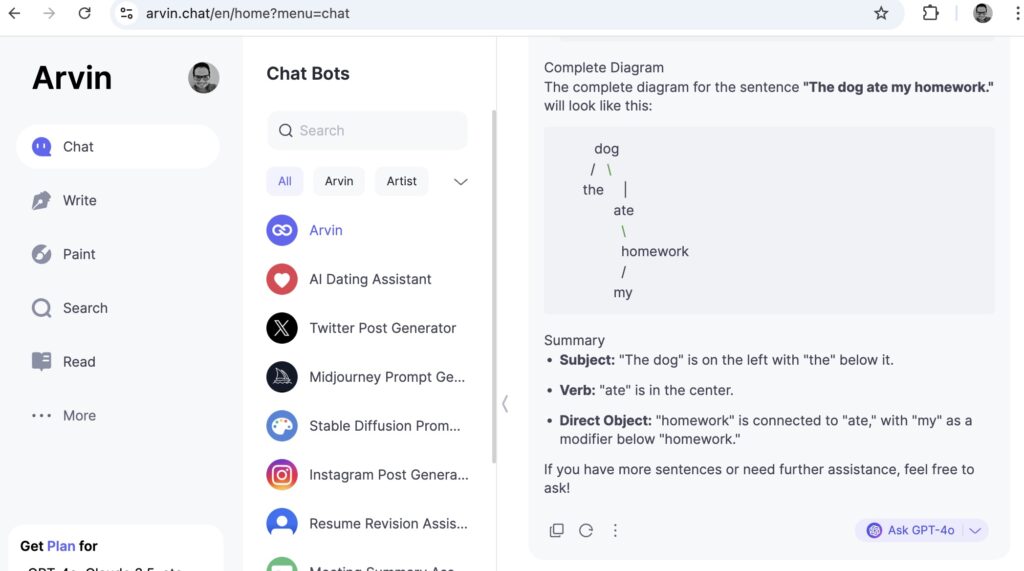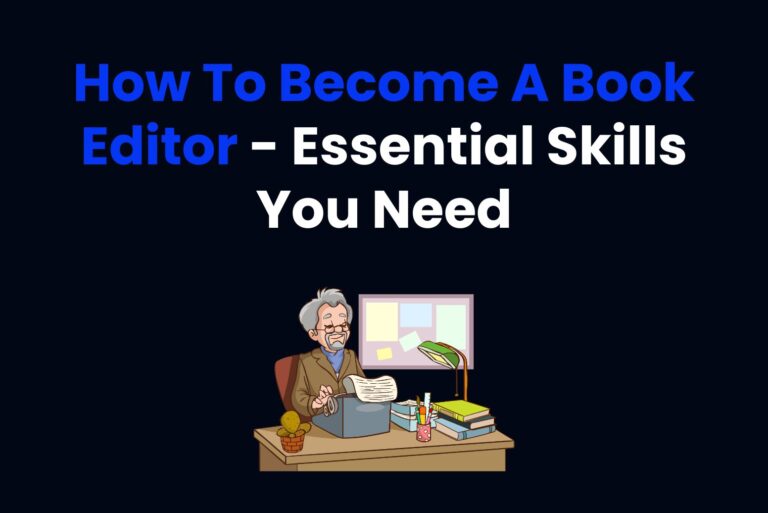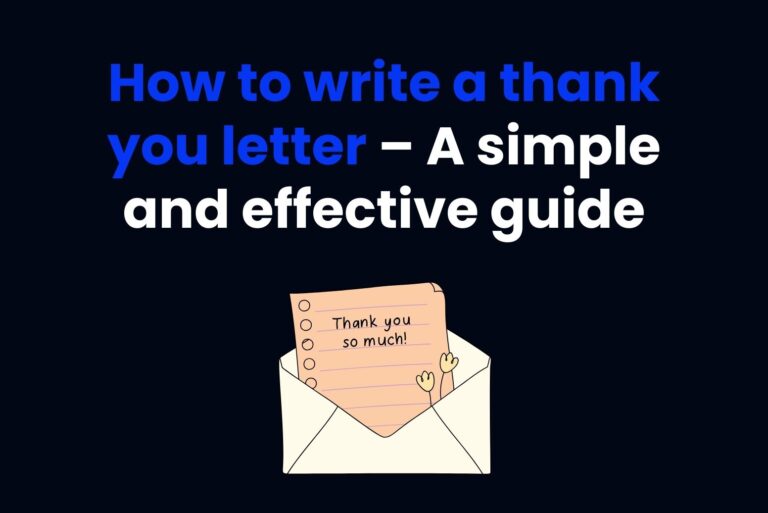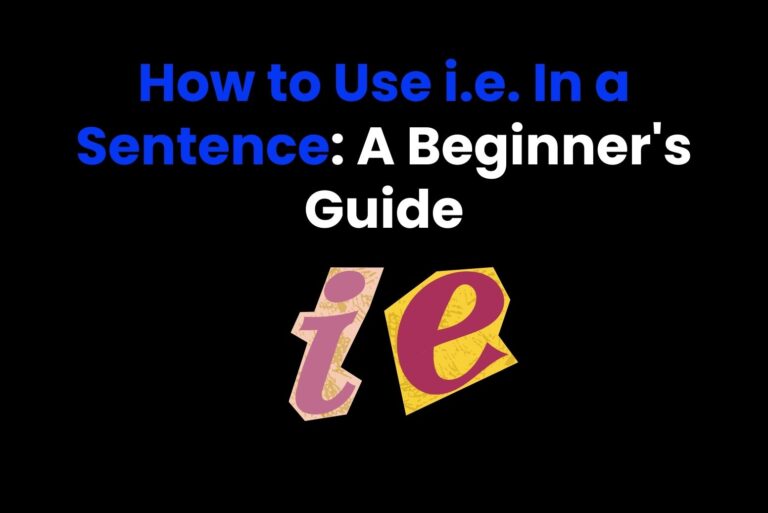Improve Your Writing: How to Diagram a Sentence in 6 Steps

Are you wondering how to diagram a sentence? This process isn’t often used outside of academia, but it can be extremely useful for anyone writing an article, story, or letter.
It’s essentially a writing tool that helps you to clarify your thoughts and express yourself in the best possible way.
As a former English literature student, I learned how to diagram a sentence throughout the course of my studies. As a professional writer today, I still use this tool when crafting sentences for various articles and stories.
But given that it’s not particularly well known and that many people don’t bother with diagraming a sentence, I want to show you how to do it.
First, I explain the background and why it’s useful. Then, I will provide you with six super simple steps that you can follow, which will show you how to diagram a sentence like a pro.
Sentence diagramming basics – what you need to know
Fundamentally, sentence diagramming is visualizing the pattern of a sentence. You need to first recognize that a sentence comprises numerous component parts, typically made up of nouns, verbs, adjectives, prepositions, and other word types.
There are many ways to start a sentence, but you should always begin with a subject, a verb, and a direct object. Understanding these fundamental components is crucial before I dive into how to diagram a sentence.
Then, when you diagram a sentence, you’re better able to determine the roles that each of the word types play in the sentence. This, in turn, will help to improve your writing and command of the English language, as you will be able to play around with your sentence structure and use words and phrases correctly.
Though it sounds quite technical from the outset with codes, lines, and various other terms, sentence diagramming is actually straightforward when you get the hang of it. There are several ways to diagram a sentence. But the most common is known as the Reed-Kellogg method, which I will interpret and simplify for you here.
How to diagram a sentence – the Reed-Kellogg method explained
Developed in the United States in the 1970s, the Reed-Kellogg method was named after its two founders, Alonzo Reed and Brainerd Kellogg. The founders created the system to teach learners grammar through visualization, hoping to make the process easier for students.
Simple sentence structures can be diagrammed in this method in the following way:
Subject | Verb | Direct Object
- The subject is the person or thing responsible for the action in the sentence.
- The verb (sometimes called the predicate verb) specifies which action is taking place.
- The direct object is the noun that has the action done to it.
Sentence diagram example
The best way to understand sentence diagramming is to use an example:
| Subject | Verb | Direct object |
| Men | Drink | Beer |
In its simplest form, this is how sentence diagramming works. It shows you the three main components of the sentence, and you can interchange them as and when you please. For instance, our example above could become:
- Boys play football.
- Girls eat pasta.
- Women draw pictures.
- Adults hold babies.
But, unfortunately, sentences in English are not just made up of three simple words. There are several other modifiers and words that can be used to extend sentences, which also need to be shown as part of the diagram.
The role of modifiers in sentence diagramming
In grammar, simple sentences, or, more specifically, the subject within a sentence, can be modified by adjectives and adverbs. This adds more detail to the sentence.
Prepositional phrases may also be required to ensure the sentence makes sense. Before we show you how this works in a diagram, here’s a brief definition of the other types of words you might find in a sentence:
- Modifiers: These are words that add or change the meaning of a sentence and include adverbs and adjectives. They’re typically used to add more description to the nouns or verbs.
- Indirect object: This is the next noun in the sentence and the one that receives the direct object.
- Articles: Definite and indefinite articles (the / a or an) help to define ownership of a noun.
- Preposition: Used to signify things like time, location, direction, and space. Examples include in, at, with, etc.
Kellogg and Reed also adapted their method for advanced sentences, coordination, and subordinate clauses, but I want to keep things relatively simple at this stage – more on advanced diagramming a little later.
Each of these sentence components helps you expand a sentence and make it much more readable. This is an important skill for creative writing, but it’s also useful when writing blog posts and articles. If you feel like your sentences are a little short and simple, you can use our AI Sentence Expander Tool to improve your writing for free.
Now that you’re aware of the basic structure of a diagram and which additional words and phrases can be used, I want to show you precisely how to diagram a sentence in six simple steps.
How to diagram a sentence in six simple steps

Okay, here are the steps you need to follow to diagram a sentence:
Step 1: Begin with the noun & verb
The starting point when diagramming a sentence is the main verb and the direct object. Kellogg and Reed drew a line (they called it the baseline) underneath the two words. They then added a vertical line between the words, resembling a cross. For example:
Man (noun) | Gave (verb)
Step 2: Include the direct object
The second step is to include the direct object in the sentence, which should go directly after the verb. Here’s what it should look like:
Man (noun) | Gave (verb) | Beer (direct object)
Step 3: Add an indirect object
It’s now time to go one further, and we can add the indirect object to the sentence. In the Reed-Kellogg diagram, a new row is created, and the indirect object is placed beneath the initial sentence. It should be indicated by a diagonal line as follows:
Man (noun) | Gave (verb) | Beer (direct object)
\ Me (indirect object)
Step 4: Include prepositions
Prepositions should then be added to the sentence to add context and to make it relevant. Now, these are usually indicated in a sentence diagram next to the words that they modify. However, this can be challenging, as prepositions can make sense in different parts of the sentence.
Using my example above, let’s assume that you have been given a beer by the man in the evening while visiting your local pub. Both of these make sense:
- In the evening, (the) man gave me beer.
- (The) man gave me beer in the evening.
However, in both sentences, the preposition is relevant to the word gave, as it gives more information about the time at which the exchange took place. So, from a diagramming standpoint, we need to indicate that gave is the word being modified:
Man (noun) | Gave (verb) | Beer (direct object)
\ Me (indirect object)
\ in the evening (preposition)
Step 5: Add articles
The next step is to add articles to the sentence to ensure that it makes sense. Remember, you need to decide whether to use definite or indefinite articles, depending on the situation you’re trying to present.
In my example, both could make sense. If I use the, it indicates that I’m talking about a specific man and a specific pint of beer. However, if I use a, it seems that I’m referring to a random beer and a man I don’t know.
So, as I know the person in question and as I’m referring to a specific drink, I will use the definite article in this example:
Man (noun) | Gave (verb) | Beer (direct object)
\The (def article) \the (def article)
\me (indirect object)
\in the evening (preposition)
Step 6: Add any modifiers
The final step is to consider which modifiers you would like to add to this sentence. However, modifiers are not necessary, as I already have a sentence that makes sense:
The man gave me the beer in the evening.
Sure, this sentence makes sense, but it hardly leaps off the page. It’s a statement of fact and by using specific modifiers like adjectives or adverbs, I can make it instantly more appealing.
For instance, I could use an adjective to describe the man and the beer, which would immediately add something extra to the sentence. I might even add an adverb to the sentence to show how the man gave me the beer (carefully, generously, helpfully, etc.)
But to avoid making things too confusing at this stage, I will stick to two adjectives as my modifiers, as shown in my sentence diagram below:
Man (noun) | Gave (verb) | Beer (direct object)
\The (def article) \the (def article)
\old (adjective) \delicious (adjective)
\me (indirect object)
\in the evening (preposition)
So, after carefully diagramming this sentence, I’m left with the following example:
- The (def article) old (adjective) man (noun) gave (verb) me (indirect object) the (def article) delicious (adjective) beer (direct object) in the evening (preposition).
- The old man gave me the delicious beer in the evening.
Experimenting with a sentence diagram – Use AI to your advantage
I’ve already mentioned that you might like to include other modifiers like adverbs in your sentence diagram, but you can also experiment with the words in the above diagram to change the sentence.
This is all part of the experimental process when learning how to diagram a sentence for the first time.
But one of the easiest ways to experiment with sentence diagramming is to prompt Arvin AI. Our chat feature is the perfect literary companion, offering you instant help when breaking down a sentence.
For example, I asked Arvin to diagram the sentence, “the dog ate my homework” as shown in the prompt below. As you can see, within seconds, Arvin provided a complete sentence diagram, showing the key constituent parts of the sentence.

Though I gave it a very simple prompt and sentence, you can use it for much more advanced sentences, including numerous modifiers and preposition phrases.
As such, Arvin can be a handy tool when experimenting and learning how to diagram a sentence, whether you’re a student or an experienced writer.
Advanced sentence diagramming – Appositives, conjunctions, and gerunds
I’ve kept things deliberately simple so far in this tutorial. However, I want to leave you with some tips and insights into advanced sentence diagramming.
This essentially just means that you can diagram longer and more compex sentences by using the same method I outlined above.
But you may need to include further word and phrase types, as those already introduced may not be sufficient:
Using an appositive
This is a special type of modifier and is in the form of a noun or a noun phrase. They help the reader to identify specific nouns, but also serve other purposes. It typically follows another noun in a sentence and provides bonus information that, though not imperative, is helpful to the reader. For instance:
- My best friend from college, Bob Hendry, was a brilliant writer.
The appositive here, Bob Hendry, gives the reader contextual information, naming the writer’s childhood friend. It’s an appositive because the sentence without the name can still work well, as shown below:
- My best friend from college was a brilliant writer.
Using a conjunction
When diagramming longer sentences, you will almost certainly come across conjunctions. These are words or phrases that join sentences together (and, but, because, etc.) For instance:
- The food tasted great, but it made me sick when I got home.
Diagramming conjunctions can be difficult, as it depends on why the conjunction is being used. The above is an example of a compound sentence that has two individual clauses.
My advice is to use Arvin to help you diagram sentences with conjunctions, which you can do using an appropriate prompt, as shown in the section above.
Using gerunds
Gerunds are verbs that present and act as nouns, so they can be difficult to identify. They use the -ing or participle form. Examples include thinking, running, and speaking.
The easiest way to understand a gerund is that it occurs when an action becomes a thing. For instance:
- The student visited the library so she could concentrate on studying.
“Study” on its own is a verb, but in this sentence, it’s a gerund, as the action has become a noun, given that it’s the focus of the student’s attention.
Gerunds, like conjunctions and appositives, are examples of advanced sentences and can be diagrammed and mapped with the help of advanced AI.
The bottom line – how to diagram a sentence
As you now know, learning how to diagram a sentence isn’t as difficult as it initially sounds. This visualization trick is a great way to improve your writing and can show you how to use different words and modifiers to improve your work.
Our advice is to keep things simple as you start this practice. Use our simple six-step guide to kick things off. Then, as you become more accomplished, consider adding gerunds, conjunctions, and appositives to increase the complexity.
Don’t forget that Arvin AI is the perfect literary tool to help you with sentence diagramming and composition. Check out our excellent AI writer tool and experiment with it to improve the way you write this year.
How to diagram a sentence FAQ
Is there an app that will diagram sentences?
There sure is! Arvin is the ideal app to use to diagram sentences. Even as an English graduate, I find that it can be difficult to diagram complex sentences accurately, which is where Arvin comes in. As I illustrated in this article, you can use Arvin to diagram sentences for free, saving you lots of time and hassle in the process.
What are the basic rules in diagramming sentences?
The basic rule is to start as simply as possible. Create your sentence with the noun, verb, and direct object, then add different words and phrases as you go. You can follow our six-step guide above to diagram sentences correctly.
Why do we diagram sentences?
The main reason for diagramming a sentence is to visualize its component parts. When you break a sentence down and can identify each part, you become a better and more accomplished writer.





